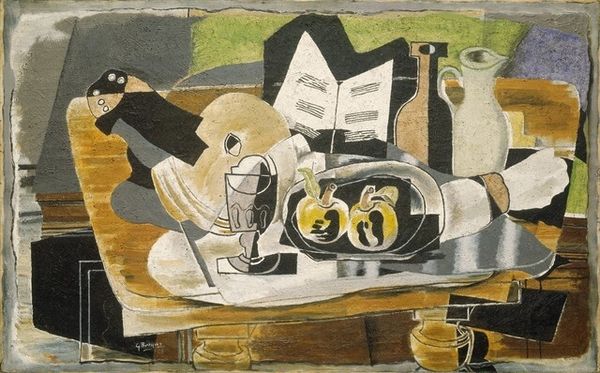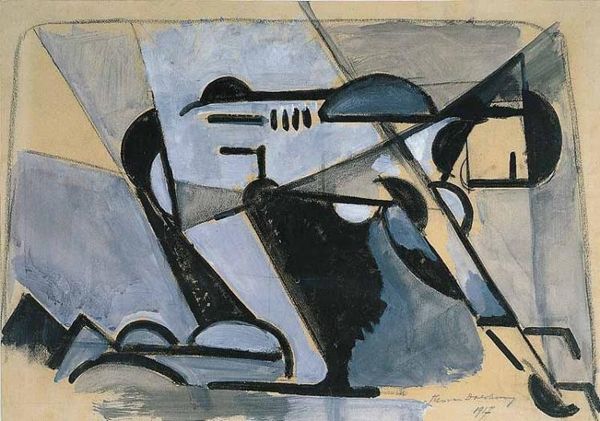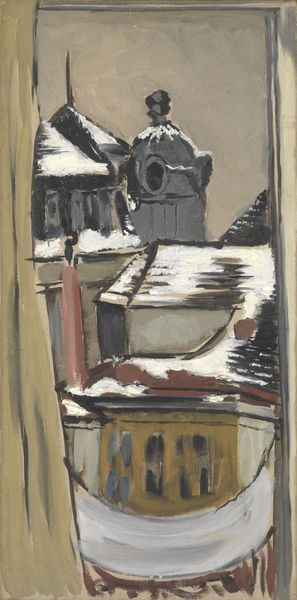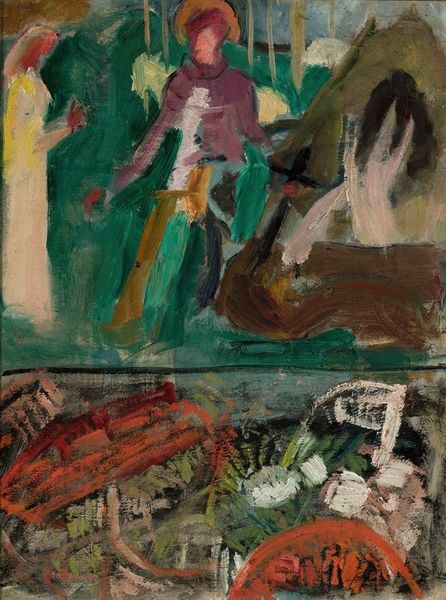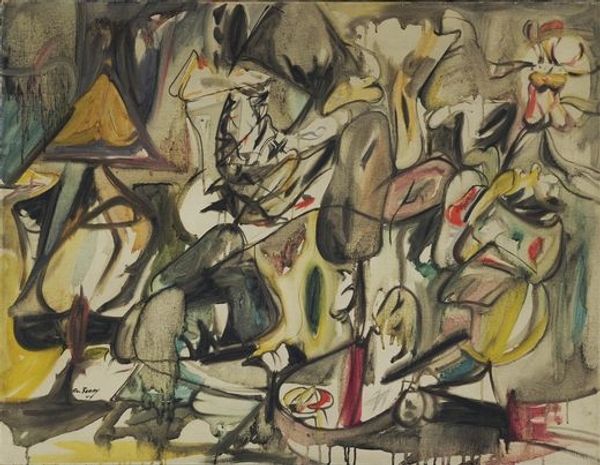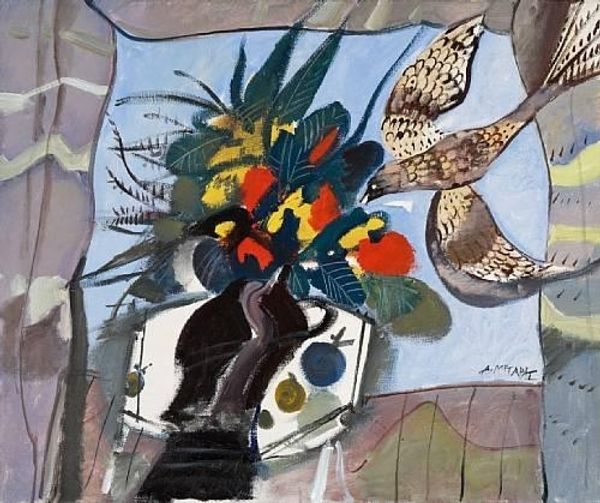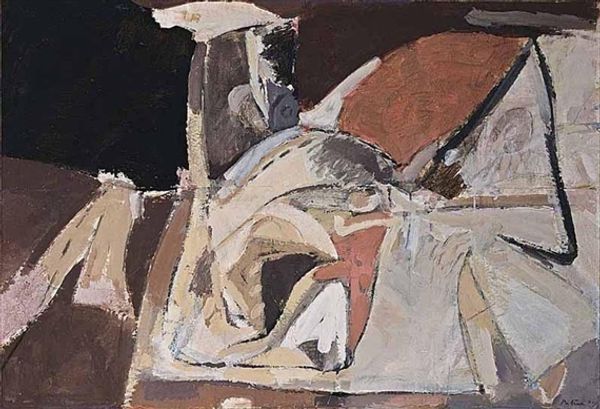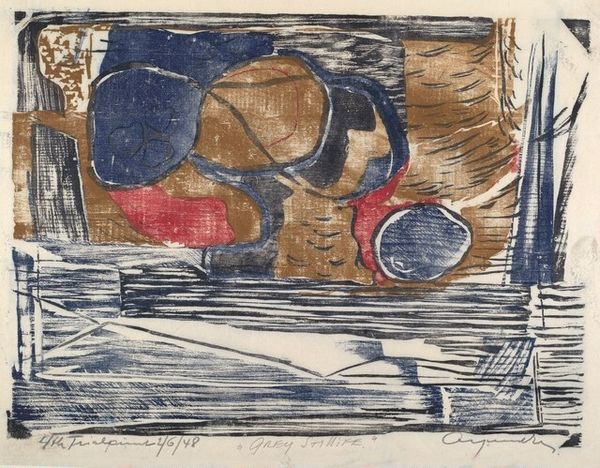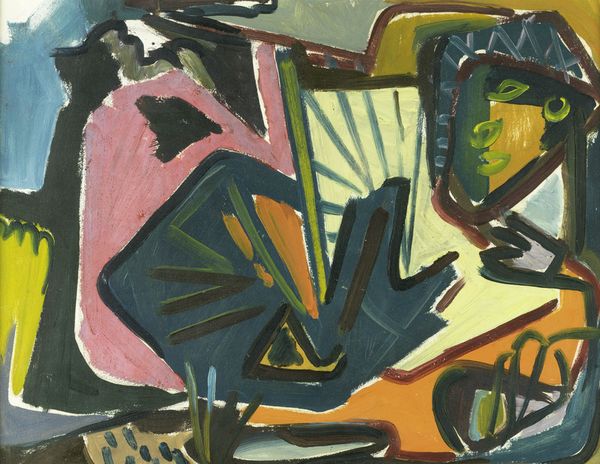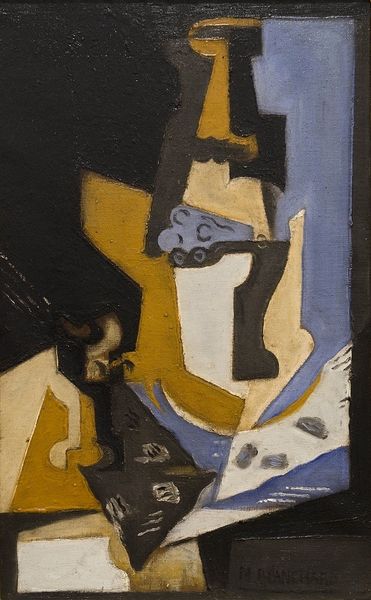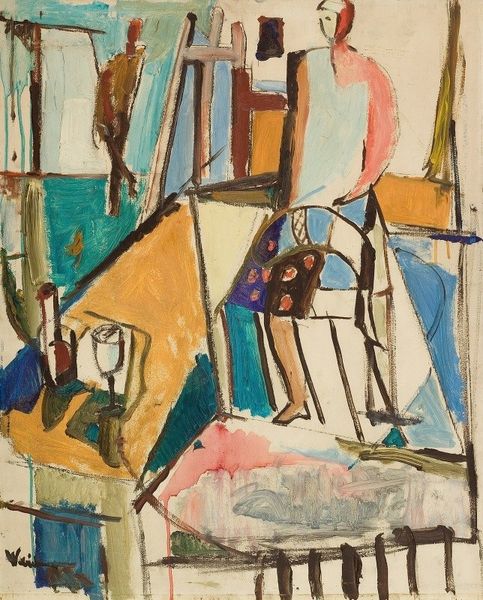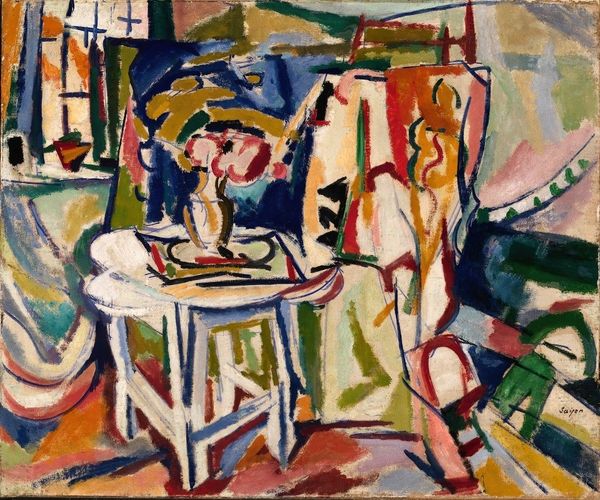
painting, oil-paint
#
cubism
#
abstract painting
#
painting
#
oil-paint
#
bird
#
oil painting
#
modernism
Copyright: Karl Knaths,Fair Use
Curator: Karl Knaths painted "Duck Decoy" in 1931, an oil painting reflecting cubist and modernist styles. Editor: It’s rather jarring, isn't it? At first glance, the forms feel both familiar and fragmented, like a memory struggling to solidify. Curator: Indeed. Let's delve into the 'how' and 'why.' The work embraces modernist ideals by deconstructing recognizable imagery and pointing to how commercial culture re appropriates and uses signs and symbols for materialist interests. Editor: Precisely! Notice the predominance of avian imagery—birds as symbols of freedom, navigation, even prophecy in some traditions are reduced to flat signs and surface elements of commercial culture in the Western world.. It's intriguing how a symbol so deeply embedded in human consciousness is now… deconstructed? Curator: Right. Knaths had an awareness of everyday processes involved with object making: this reflects a new material reality following World War I that was shifting established relations to production. The use of simplified geometric forms may have been, too, a conscious choice of minimizing the appearance of artistry in contrast to his symbolist colleagues like Dove. Editor: The subdued color palette further emphasizes a sort of material exhaustion, with hints of former cultural exuberance. How do you think Knaths viewed the impact of industrial labor on human life in 1930s America? Curator: I would say it was tinged with a cautiousness and acceptance toward material progress. "Duck Decoy" functions to deconstruct cultural memory. The means of production during that era rapidly changed human relations, leading to a re evaluation of what was "traditional" to material and craft-based knowledge. Editor: So, in essence, a reflection on the changing symbolism amidst shifting industrial tides, and also a sign that mass industrial labor processes were here to stay? Curator: Precisely. Knaths saw this coming, just like so many people at the time were envisioning a society fully committed to technological innovations. The symbolism that carries our past traditions would change along with that society as a result of everyday life experiences, not as some transcendental notion from a distant past. Editor: A rather unsettling but incredibly thought-provoking reevaluation then, which still echoes strongly in our image-saturated present. Curator: Indeed, this painting prompts reflection on how materiality informs and distorts how we create a "new reality," both individually and as a collective.
Comments
No comments
Be the first to comment and join the conversation on the ultimate creative platform.


